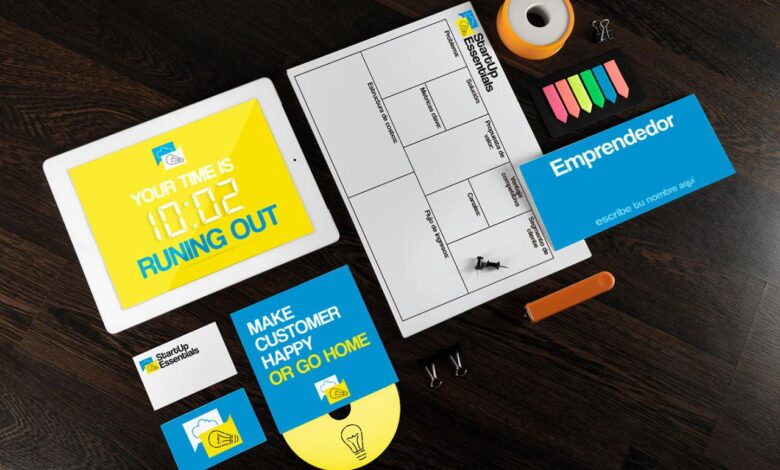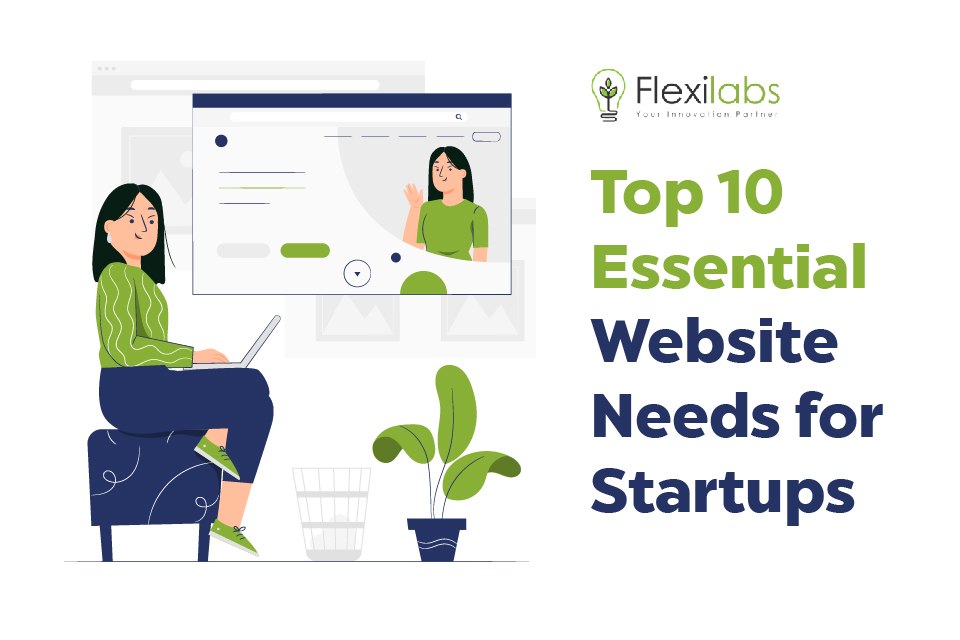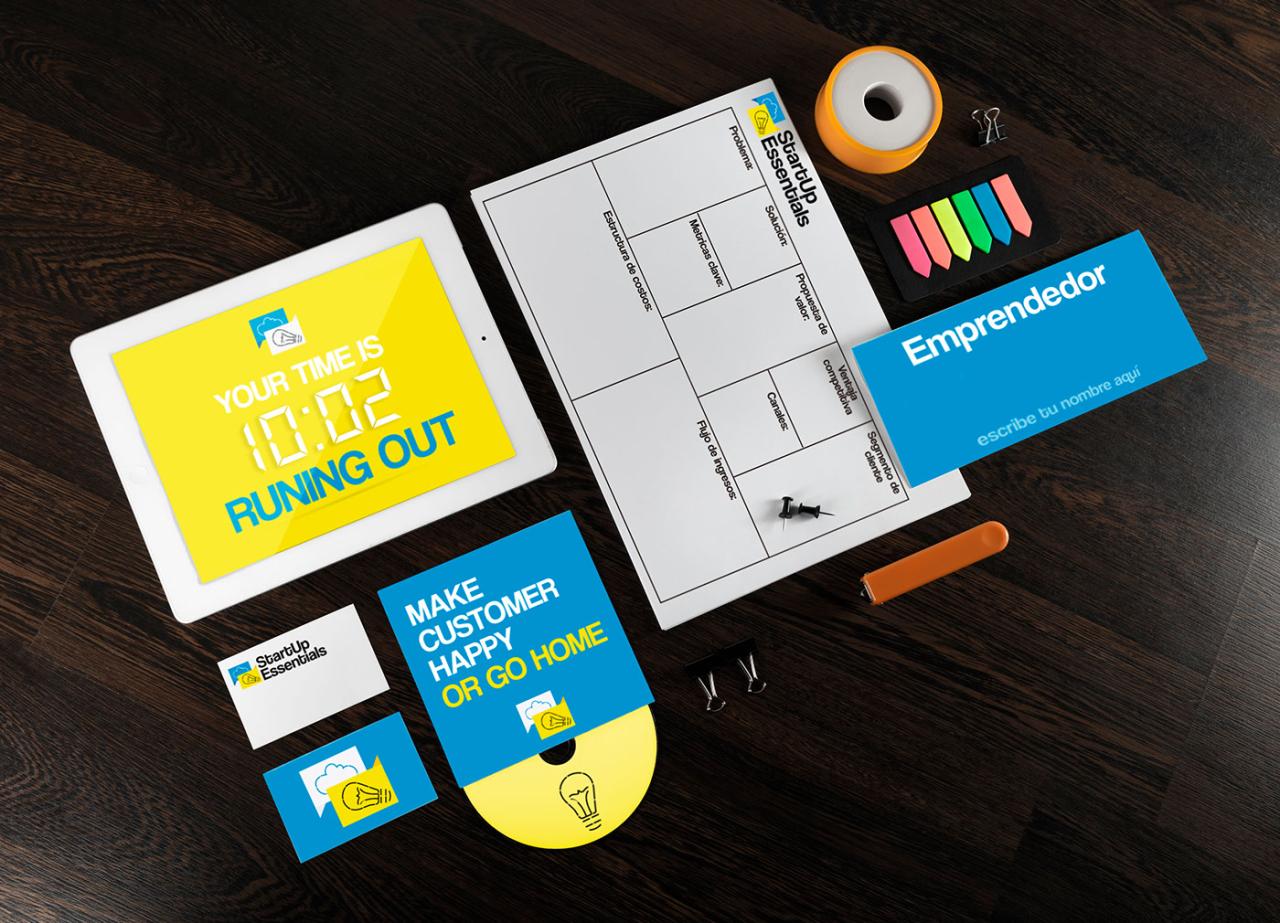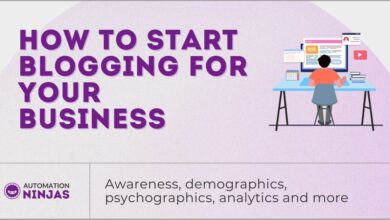
Things You Should Know Before Starting a Website
Things you should know before starting a website? It’s a HUGE question, and honestly, one I wish I’d asked myself more thoroughly before diving in headfirst! Building a website isn’t just about picking a pretty theme; it’s a strategic undertaking that requires planning, research, and a healthy dose of patience. From defining your goals and choosing the right domain name to crafting killer content and marketing your masterpiece, this journey is filled with exciting challenges – and I’m here to help you navigate them.
This post breaks down the essential steps, from nailing down your website’s purpose and understanding your target audience to choosing a reliable hosting provider and mastering the art of content creation. We’ll explore website design, marketing strategies, and even the legal aspects you need to consider. Think of this as your ultimate pre-launch checklist, designed to ensure your website launch is as smooth as possible – and that you actually achieve your goals!
Website Purpose and Goals
Before you even begin designing your website, you need a clear understanding of its purpose and what you hope to achieve. Without defined goals, your website will lack direction and ultimately fail to reach its potential. A well-defined purpose acts as a guiding star, shaping every decision from content creation to marketing strategies.Defining clear objectives is crucial for measuring success.
Vague aspirations like “increase brand awareness” are unhelpful. Instead, you need concrete, measurable goals.
Three Distinct Website Objectives
Establishing three distinct objectives provides a balanced approach, ensuring your website covers multiple aspects of your online presence. For example, a successful e-commerce website might aim for: (1) Increased Sales: A quantifiable goal, such as a 20% increase in year-over-year revenue. This objective is directly tied to the website’s profitability and can be tracked easily through sales data.
(2) Enhanced Brand Awareness: Measurable through website traffic, social media engagement, and brand mentions. A specific goal could be to increase website visits by 30% in the next quarter. (3) Improved Customer Satisfaction: This can be assessed using customer surveys, feedback forms, and reviews. A target could be achieving an average customer satisfaction rating of 4.5 out of 5 stars.
These objectives are interconnected; increased sales often lead to improved brand awareness and higher customer satisfaction.
Target Audience Identification and Content Tailoring
Understanding your target audience is paramount. Without this knowledge, your content will fall flat. Consider demographics (age, location, income), psychographics (lifestyle, values, interests), and online behavior (social media usage, preferred websites). Detailed buyer personas, fictional representations of your ideal customers, are extremely helpful in this process. For instance, if you are selling handmade jewelry, your target audience might be women aged 25-55, interested in fashion and unique accessories, who are active on Instagram and Pinterest.
Once you’ve identified your target audience, tailor your content to resonate with their needs and preferences. Use language they understand, address their pain points, and offer solutions to their problems.
User Journey Mapping
A user journey map visually illustrates the ideal path a visitor takes on your website. It helps you understand the user experience from the initial interaction to the desired outcome. For example, a user journey map for an e-commerce website might show the following steps: (1) Discovery: The user finds the website through a search engine or social media.
(2) Browsing: The user explores the product catalog, filtering by category or price. (3) Product Selection: The user selects a specific product and views its details. (4) Purchase: The user adds the product to their cart, proceeds to checkout, and completes the purchase. (5) Post-Purchase: The user receives an order confirmation and may receive follow-up emails. A well-designed user journey map ensures a smooth and intuitive experience, increasing the likelihood of conversion and customer satisfaction.
Consider the potential friction points in each stage and identify ways to improve the user experience. For example, a complex checkout process can deter customers from completing a purchase.
Domain Name and Hosting
Getting your website online involves two crucial steps: securing a domain name and choosing a hosting provider. These two elements are foundational, impacting everything from your website’s address and accessibility to its security and performance. Choosing wisely can save you headaches down the line, while poor choices can lead to significant issues. Let’s delve into the specifics.
Domain Name Registration
Selecting a domain name is the first step towards establishing your online presence. Your domain name is your website’s address (e.g., www.example.com), and choosing a memorable and relevant one is critical for brand recognition and user experience. Several registrars offer domain name registration services, each with its strengths and weaknesses.
Consider these popular registrars:
- GoDaddy: A large, well-known registrar with a wide range of services, including domain registration, hosting, and website building tools. Pros: user-friendly interface, extensive features. Cons: can be expensive, customer service can sometimes be inconsistent.
- Namecheap: Known for its competitive pricing and excellent customer support. Pros: affordable, reliable, strong security features. Cons: interface might feel less intuitive to some users compared to GoDaddy.
- Google Domains: A simple and straightforward registrar integrated with Google’s ecosystem. Pros: easy to use, integrates well with other Google services. Cons: fewer features compared to other registrars.
Choosing a Web Hosting Provider
Your web hosting provider is responsible for storing your website’s files and making them accessible to visitors. Selecting a reliable provider is paramount for website uptime, performance, and security. Several factors influence the choice of a hosting provider, including the type of hosting, storage space, bandwidth, and customer support.
A step-by-step guide to choosing a reliable web hosting provider:
- Define your needs: Consider your website’s size, expected traffic, and technical requirements. A simple blog will have different needs than a large e-commerce site.
- Research providers: Compare different providers based on pricing, features, customer reviews, and uptime guarantees. Look for providers with a strong reputation and positive customer feedback.
- Check the hosting type: Understand the different types of hosting (shared, VPS, dedicated) and choose the one that best fits your needs and budget (see table below).
- Review security features: Ensure the provider offers robust security measures, such as SSL certificates, firewalls, and regular backups.
- Consider customer support: Choose a provider with readily available and responsive customer support, ideally 24/7.
Website Security
Website security is crucial to protect your data, your visitors’ data, and your online reputation. Neglecting security can lead to data breaches, website defacement, and financial losses. Several measures can be implemented to enhance website security:
Essential security practices include:
- Regular software updates: Keeping your website’s software (CMS, plugins, themes) up-to-date patches vulnerabilities.
- Strong passwords: Use strong, unique passwords for all website accounts and utilize two-factor authentication whenever possible.
- SSL Certificate: An SSL certificate encrypts the communication between your website and visitors, protecting sensitive data like credit card information.
- Regular backups: Regularly back up your website’s files and database to protect against data loss due to hacking or technical issues.
- Firewall: A firewall helps to prevent unauthorized access to your website’s server.
Comparison of Hosting Types
| Hosting Type | Description | Pros | Cons |
|---|---|---|---|
| Shared Hosting | Multiple websites share the same server resources. | Affordable, easy to set up. | Limited resources, performance can be affected by other websites on the server, less control. |
| VPS Hosting | A virtual private server provides dedicated resources within a shared physical server. | More resources than shared hosting, greater control, better performance. | More expensive than shared hosting, requires some technical knowledge. |
| Dedicated Hosting | An entire server is dedicated to a single website. | Maximum resources, complete control, best performance, highest security. | Most expensive, requires significant technical expertise. |
Website Design and Development

Source: flexilabs.co
Building a website is more than just slapping some text and images together; it’s about crafting a user experience that’s both visually appealing and incredibly easy to navigate. A well-designed website is crucial for attracting and retaining visitors, ultimately contributing to your website’s success. This involves careful consideration of layout, aesthetics, and responsiveness across different devices.
The process of designing a user-friendly and visually appealing website begins with understanding your target audience and the overall purpose of your website. Think about the information architecture – how users will move through the site to find what they need. This involves creating wireframes (basic layouts) and mockups (visual representations) before diving into the actual design. A consistent brand identity, including color palettes, typography, and imagery, is key to creating a cohesive and memorable experience.
User testing is also invaluable at this stage to identify areas for improvement in navigation and overall usability.
Responsive Design Implementation
Responsive design ensures your website adapts seamlessly to various screen sizes (desktops, tablets, smartphones). This is achieved primarily through flexible layouts, responsive images, and CSS media queries. For example, a responsive image will resize proportionally to fit the available screen width without losing quality, preventing distortion or excessive whitespace. Media queries use CSS to apply different styles based on the device’s screen size, orientation, and resolution.
A website built without responsive design will likely appear distorted or difficult to navigate on smaller screens, leading to a poor user experience and potentially impacting . Imagine trying to read a website designed for a desktop on a tiny phone screen – frustrating, right? Responsive design prevents this frustration.
Website Building Methods Comparison
Choosing the right method for building your website depends on your technical skills, budget, and the complexity of your project.
There are three primary approaches:
- Content Management Systems (CMS): Platforms like WordPress, Joomla, and Drupal offer user-friendly interfaces for creating and managing website content without needing extensive coding knowledge. WordPress, for example, boasts a vast library of themes and plugins, allowing for extensive customization. Advantages include ease of use, scalability, and a large community for support. Disadvantages might include limitations in design flexibility compared to custom coding and potential security vulnerabilities if not properly maintained.
- Coding from Scratch: This involves writing HTML, CSS, and JavaScript code to build your website from the ground up. It offers maximum control and flexibility in design and functionality. However, it requires significant technical expertise and is generally more time-consuming and expensive. A benefit is the ability to create truly unique and highly customized websites.
- Website Builders: Services like Wix and Squarespace provide drag-and-drop interfaces, making website creation accessible to even the most technically challenged users. They often offer pre-designed templates and integrated features, simplifying the process. The ease of use is a significant advantage. However, customization options may be limited, and you might be locked into the platform’s ecosystem, potentially hindering future scalability or migration.
Content Creation and Management
Building a successful website hinges on consistently delivering valuable content that resonates with your target audience. This means having a plan, creating high-quality materials, and effectively managing your content over time. Ignoring this crucial aspect will likely lead to a stagnant website with low engagement and poor search engine rankings.
A well-defined content strategy ensures your website stays fresh, engaging, and relevant. This involves planning what type of content to create, when to publish it, and how to promote it. It’s not just about throwing content online; it’s about creating a strategic flow that keeps your audience coming back for more.
Content Calendar for the First Three Months
A content calendar is your roadmap to consistent publishing. It helps you stay organized and ensures you’re consistently providing fresh content. Here’s a sample calendar for your first three months:
This example assumes a weekly posting schedule. You can adjust the frequency based on your resources and target audience. Remember to track your progress and adjust the plan as needed.
| Week | Month 1 | Month 2 | Month 3 |
|---|---|---|---|
| 1 | Blog post: Introduction to [Website Topic] | Video: [Website Topic] Tutorial Part 1 | Infographic: Key Stats on [Website Topic] |
| 2 | Blog post: Benefits of [Website Topic] | Blog post: Case Study: [Website Topic] Success Story | Blog post: Common Mistakes to Avoid with [Website Topic] |
| 3 | Video: Interview with an expert in [Website Topic] | Infographic: Comparison of [Website Topic] Solutions | Video: [Website Topic] Tutorial Part 2 |
| 4 | Blog post: [Website Topic] FAQ | Blog post: Advanced Tips for [Website Topic] | Blog post: The Future of [Website Topic] |
| 5 | Infographic: [Website Topic] Workflow | Video: Live Q&A on [Website Topic] | Infographic: [Website Topic] Glossary |
| 6 | Blog post: [Website Topic] Glossary of Terms | Blog post: [Website Topic] Resources and Links | Blog post: Review of [Website Topic] Tool |
| 7 | Blog post: Guest Post: [Relevant Expert] on [Website Topic] | Video: Behind the Scenes of [Website Topic] | Blog post: [Website Topic] and its impact on [related topic] |
| 8 | Video: [Website Topic] Quick Tips | Infographic: [Website Topic] Timeline | Video: [Website Topic] User Testimonials |
| 9 | Blog post: [Website Topic] Case Study 2 | Blog post: [Website Topic] Myths Debunked | Blog post: [Website Topic] Trends for the Next Year |
| 10 | Blog post: [Website Topic] and [Competitor] Compared | Video: How to Use [Website Topic] Effectively | Infographic: [Website Topic] Statistics and Facts |
| 11 | Video: [Website Topic] for Beginners | Blog post: [Website Topic] Best Practices | Blog post: Addressing your questions about [Website Topic] |
| 12 | Infographic: [Website Topic] Key Takeaways | Blog post: The Ultimate Guide to [Website Topic] | Video: [Website Topic] Success Stories |
High-Quality, Original Content
High-quality, original content is essential for attracting and retaining visitors. It establishes your website as a reliable source of information and helps you rank higher in search engine results. Duplicate or low-quality content will harm your website’s reputation and search engine optimization ().
Different content formats cater to different learning styles and preferences. Blog posts provide in-depth explanations; videos offer visual demonstrations; infographics present complex information concisely. A diverse content strategy keeps your audience engaged and returning for more.
Content Creation and Management Tools
Several tools can streamline your content creation and management process. Choosing the right tools depends on your specific needs and budget.
Here are a few examples:
- WordPress: A popular content management system (CMS) that simplifies website building and content publishing. It offers various plugins for , social media integration, and more.
- Canva: A user-friendly graphic design tool for creating visually appealing infographics, social media graphics, and other visual content.
- Google Docs/Microsoft Word: Essential for writing and collaborating on blog posts and other text-based content.
- YouTube Studio/Vimeo: For uploading, managing, and promoting video content.
- Asana/Trello: Project management tools for organizing your content calendar and tracking your progress.
- Grammarly: A writing assistant that helps improve the grammar, spelling, and clarity of your content.
Website Marketing and Promotion
Getting your website noticed is crucial for success. Without effective marketing, even the best website will struggle to attract visitors and achieve its goals. This section covers strategies to promote your website and drive valuable traffic. We’ll explore social media, search engine optimization (), and paid advertising, along with techniques for building backlinks.A successful online presence requires a multifaceted approach.
Simply building a website isn’t enough; you need a robust plan to get people to find and engage with it. This involves understanding your target audience and employing various marketing methods to reach them effectively.
Social Media Marketing Strategy
A basic social media marketing strategy involves identifying the platforms most relevant to your target audience and creating engaging content tailored to each platform. For example, if your website sells handcrafted jewelry, Instagram, with its visual focus, would be a strong choice. Facebook, with its broader reach, could also be valuable. A consistent posting schedule is key. Aim for regular updates—daily or several times a week, depending on your resources and audience engagement.
Engage with followers by responding to comments and messages, fostering a sense of community. Consider running targeted ads on these platforms to reach a wider audience. Analyzing your results using platform analytics is crucial for identifying what works and refining your approach. For instance, tracking engagement rates (likes, shares, comments) and website clicks from social media posts allows for data-driven optimization.
Driving Website Traffic
Driving traffic to your website requires a blend of strategies. Search Engine Optimization () focuses on improving your website’s ranking in search engine results pages (SERPs). This involves optimizing your website content, meta descriptions, and page titles with relevant s. Social media marketing, as discussed above, leverages social media platforms to promote your website and drive traffic. Paid advertising, such as Google Ads or social media ads, involves paying for your website to appear prominently in search results or on social media feeds.
This can provide a quick boost in traffic but requires a budget. A well-rounded approach often combines all three. For example, a blog post optimized for ( research, optimized title and meta description) can then be shared on social media, potentially supplemented by paid social media ads to increase its reach.
Backlink Building and Search Engine Ranking
Building backlinks—links from other websites to yours—is crucial for . High-quality backlinks from reputable websites signal to search engines that your website is trustworthy and authoritative, improving your search engine ranking. Strategies for building backlinks include guest blogging on relevant websites, creating high-quality content that others naturally link to, and participating in online communities and forums. For instance, writing a guest post for a popular blog in your niche can provide a valuable backlink and exposure to a new audience.
Focusing on creating truly valuable and unique content is key; this naturally attracts links from other sites who want to share your insightful information. Monitor your backlink profile using tools like Ahrefs or SEMrush to identify any low-quality or spammy links that could harm your ranking. Regularly auditing and improving your backlink profile is an ongoing process for success.
So, you’re thinking about building a website? Awesome! Before you dive in, remember to plan your content strategy – this is crucial for success, and it’s something I learned while figuring out how to effectively promote my videos after reading the great guide on getting it on with youtube. Understanding your audience and having a clear purpose are key aspects of website planning, just as they are with YouTube marketing.
Getting those basics right before you start building will save you a lot of headaches later.
Website Analytics and Monitoring

Source: mycodelesswebsite.com
Understanding how your website performs is crucial for its success. Website analytics provide invaluable insights into user behavior, allowing you to identify what’s working, what’s not, and how to optimize for better results. By tracking key metrics and analyzing the data, you can make data-driven decisions to improve your website’s effectiveness and achieve your goals.
Key Website Performance Indicators (KPIs) and Tracking Methods
Several key metrics reveal your website’s health and effectiveness. These KPIs offer a clear picture of user engagement and overall website performance. Tracking these metrics allows for continuous improvement and informed decision-making.
| KPI | Description | Tracking Method |
|---|---|---|
| Website Traffic | The total number of visitors to your website. | Google Analytics, website server logs |
| Bounce Rate | Percentage of visitors who leave your website after viewing only one page. | Google Analytics |
| Average Session Duration | The average time visitors spend on your website during a single session. | Google Analytics |
| Pages per Visit | The average number of pages a visitor views during a single session. | Google Analytics |
| Conversion Rate | The percentage of visitors who complete a desired action (e.g., making a purchase, filling out a form). | Google Analytics, event tracking |
Utilizing Website Analytics Tools for User Behavior Understanding
Website analytics tools go beyond simple traffic numbers; they provide a detailed understanding of user behavior. By analyzing data like heatmaps, scroll depth, and user flow, you can pinpoint areas for improvement on your website’s design and content. For instance, a high bounce rate on a specific landing page might indicate a problem with the page’s content or design, prompting a redesign or content overhaul.
Similarly, low scroll depth suggests users aren’t engaging with the content on the page, requiring improvements to attract and retain user attention.
Setting Up and Interpreting Google Analytics Data
Google Analytics is a free and powerful tool for tracking website traffic and user behavior. Setting it up involves creating a Google Analytics account, obtaining a tracking ID, and adding the tracking code to your website. Once set up, Google Analytics provides a wealth of data, including real-time traffic, audience demographics, acquisition sources, and behavior flow. Interpreting this data requires understanding the various reports and metrics available.
For example, the Acquisition report shows where your traffic is coming from (organic search, social media, paid advertising), while the Behavior report reveals how users interact with your website content. By regularly reviewing and analyzing this data, you can identify trends, understand user preferences, and make informed decisions to improve your website’s performance.
Legal and Ethical Considerations

Source: behance.net
Launching a website isn’t just about coding and design; it’s also about navigating the legal and ethical landscape to ensure you’re operating within the bounds of the law and acting responsibly. Ignoring these aspects can lead to significant problems, from hefty fines to reputational damage. This section covers crucial legal and ethical considerations to keep in mind.
Website Terms of Service and Privacy Policy
A comprehensive Terms of Service (TOS) and Privacy Policy are essential for any website, regardless of size or purpose. The TOS Artikels the rules and regulations users must agree to when using your website. This includes acceptable use, prohibited activities, and account termination policies. The Privacy Policy, on the other hand, details how you collect, use, and protect user data.
Both documents are legally binding and protect you from potential liabilities. For example, a clear TOS might prohibit the use of your website for illegal activities, while a strong Privacy Policy would clearly explain how you handle user information, such as email addresses and purchase history, complying with regulations like GDPR (General Data Protection Regulation) or CCPA (California Consumer Privacy Act).
Failing to have these policies in place can leave you vulnerable to lawsuits and damage user trust.
Copyright Laws and Best Practices for Using Images and Other Copyrighted Materials
Copyright law protects original creative works, including images, text, music, and videos. Using copyrighted material without permission is infringement and can result in legal action. Best practices include obtaining written permission from copyright holders or using royalty-free or Creative Commons licensed content. Websites like Unsplash and Pexels offer high-quality images under various licenses, allowing for free use with attribution or under specific conditions.
Always carefully review the license terms before using any image or other copyrighted material. For example, using a photograph from a professional photographer’s website without permission is copyright infringement, whereas using an image clearly labeled as “Creative Commons Zero” is permissible without restriction.
Website Accessibility Guidelines and Best Practices for Inclusive Design, Things you should know before starting a website
Website accessibility ensures that people with disabilities can access and use your website. This is not only ethically responsible but also legally required in many jurisdictions. Guidelines like WCAG (Web Content Accessibility Guidelines) provide standards for creating accessible websites. Key aspects include providing alternative text for images (so screen readers can describe them), using sufficient color contrast, ensuring keyboard navigation, and offering captions for videos.
For example, a website lacking alt text for images excludes visually impaired users, while a website with poor color contrast can be difficult for users with low vision to navigate. Designing for accessibility benefits everyone, creating a more user-friendly and inclusive online experience.
Budget and Resources
Launching a website isn’t a free endeavor; it requires careful planning and budgeting to ensure its success. Understanding the costs involved, from initial setup to ongoing maintenance, is crucial for avoiding financial surprises and maximizing your return on investment. This section Artikels key budgeting considerations and resource management strategies.Creating a realistic budget involves breaking down website costs into distinct phases: initial setup, ongoing maintenance, and marketing.
The initial setup includes domain registration, hosting, design and development, and content creation. Ongoing maintenance encompasses hosting fees, security updates, content updates, and potential technical support. Marketing costs can range from paid advertising to optimization. A well-structured budget allows for flexibility and unexpected expenses.
Initial Website Setup Costs
The initial investment is the most significant upfront expense. This includes the costs associated with acquiring a domain name (typically ranging from $10 to $20 per year), choosing a hosting plan (varying greatly depending on needs, from a few dollars to hundreds per month), and the development of the website itself. Website design and development costs can vary dramatically based on complexity and whether you hire a freelancer, agency, or use a website builder.
Expect to spend anywhere from a few hundred dollars for a simple website to thousands for a complex, custom-built platform. Content creation, including writing, photography, and videography, should also be factored into this initial budget. A realistic example would be a small business allocating $2000 for initial setup, including $100 for the domain, $600 for hosting, $1000 for design and development, and $300 for initial content creation.
Ongoing Website Maintenance Costs
After the initial launch, ongoing maintenance is vital for security, performance, and functionality. This typically includes annual domain renewal fees, monthly hosting fees, regular security updates (potentially requiring professional assistance), and ongoing content updates. Consider setting aside a monthly budget for these costs. For instance, a website might require $50 per month for hosting, $20 per year for domain renewal, and an additional $100 per month for content updates and technical support.
Resource Identification and Management
Successful website operation requires access to various resources. These include:
- Hosting Provider: A reliable hosting provider ensures website uptime and accessibility. Consider factors like server location, security features, and customer support when making your choice.
- Website Builder/Developer: Depending on your technical skills, you might use a website builder (like Wix or Squarespace) or hire a freelance developer or agency for custom development.
- Content Creation Tools: These could include writing software, graphic design tools, or video editing software.
- Marketing Tools: tools, social media management platforms, and email marketing services can significantly aid in website promotion.
- Analytics Tools: Google Analytics is a free and powerful tool for tracking website traffic and user behavior.
Effective resource management involves careful selection based on your needs and budget, prioritizing essential tools and services. Regularly reviewing your resource utilization can identify areas for optimization and cost savings.
Strategies for Managing Website Costs and Maximizing ROI
Several strategies can help control costs and enhance your website’s return on investment:
- Prioritize essential features: Focus on core functionalities during initial development and add features incrementally as needed.
- Explore cost-effective options: Consider affordable hosting plans, website builders, and freelance developers.
- Invest in : Organic search traffic can significantly reduce reliance on paid advertising.
- Monitor website performance: Regularly analyze website analytics to identify areas for improvement and cost optimization.
- Automate tasks: Use scheduling tools and automation features to streamline content updates and marketing efforts.
By carefully planning your budget and strategically managing resources, you can create and maintain a successful website without exceeding your financial limits. Remember that a well-maintained and effectively marketed website generates a greater return on investment in the long run.
Concluding Remarks: Things You Should Know Before Starting A Website
Launching a website is a thrilling experience, but it’s crucial to remember that it’s a marathon, not a sprint. By carefully considering each aspect – from your website’s purpose and design to its marketing and maintenance – you’ll set yourself up for success. Don’t underestimate the power of planning; it’s the foundation upon which you’ll build a thriving online presence.
Remember, your website is your digital storefront – make it count! So, take your time, do your research, and build something amazing. Now go forth and create!
FAQs
What’s the difference between shared, VPS, and dedicated hosting?
Shared hosting is the most affordable, ideal for small sites, but resources are shared. VPS offers more control and resources than shared, suitable for growing sites. Dedicated hosting provides maximum control and resources, best for large, high-traffic sites.
How much should I budget for a website?
Costs vary widely depending on your needs. Expect to spend anywhere from a few hundred dollars (for simple sites using website builders) to thousands (for custom-designed, complex websites).
Do I need to know how to code to build a website?
No, not necessarily. Content Management Systems (CMS) like WordPress make it easy to build a website without coding knowledge. However, some coding skills can be helpful for customization.
How long does it take to build a website?
The timeframe depends on complexity and your resources. A simple site might take weeks, while a more complex one could take months.





